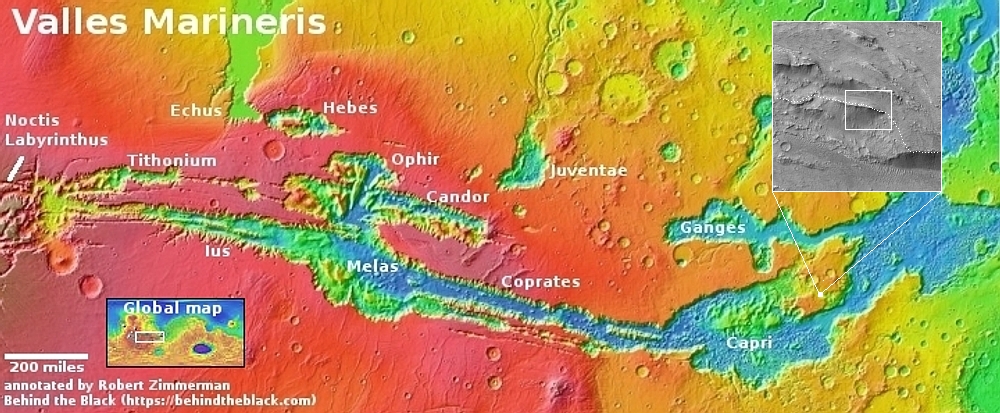Boxwork in the dry Martian tropics
Cool image time! The picture to the right, cropped and enhanced to post here, was taken on July 17, 2024 by the high resolution camera on Mars Reconnaissance Orbiter (MRO). It shows what the scientists label as boxwork, a pattern of intersecting straight ridges criss-crossing each other in a generally random manner.
The ridges themselves are very small, only a few feet high. To make them more visible I have purposely cropped this section without reducing its resolution. I have also increased the contrast.
What caused them? According to this paper [pdf] about similar boxwork found on Mount Sharp in Gale Crater, the boxwork “formed when cements filled existing pore spaces and fractures in fractured rock, and these cements were left as topographic ridges after erosion.”
In other words, the surface hardened, then fractured. Later more resistent material, likely lava, filled the cracks. When erosion later stripped the top surface away, the lava was more resistent and so became the ridges we now see.
» Read more
Cool image time! The picture to the right, cropped and enhanced to post here, was taken on July 17, 2024 by the high resolution camera on Mars Reconnaissance Orbiter (MRO). It shows what the scientists label as boxwork, a pattern of intersecting straight ridges criss-crossing each other in a generally random manner.
The ridges themselves are very small, only a few feet high. To make them more visible I have purposely cropped this section without reducing its resolution. I have also increased the contrast.
What caused them? According to this paper [pdf] about similar boxwork found on Mount Sharp in Gale Crater, the boxwork “formed when cements filled existing pore spaces and fractures in fractured rock, and these cements were left as topographic ridges after erosion.”
In other words, the surface hardened, then fractured. Later more resistent material, likely lava, filled the cracks. When erosion later stripped the top surface away, the lava was more resistent and so became the ridges we now see.
» Read more









